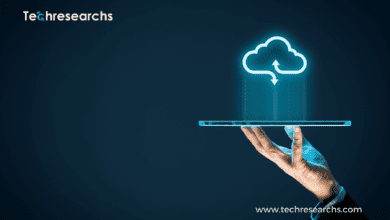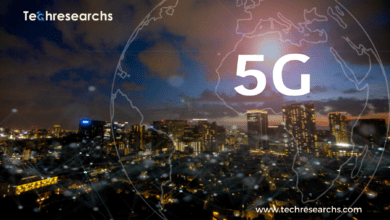Predictions For The Tech Industry In 2023


Tech Industry In 2023: I genuinely hope that 2023 turns out better than I currently believe it will at this early stage of the year.
Economically, we are having some issues, but I’m excited to see some of the fantastic technologies that are going to be released this year.
The first major display of what’s to come will be at CES, which begins soon. Judging from the per-briefings I’ve seen, a ton of fascinating new products will be released this year.
The Economy of 2023 Is Unattractive:
There are a number of reasons why the past few years haven’t been wonderful, but most of them stem from how poorly the governments handled the pandemic.
Shutdowns severely damaged the supply chain, and when people started to return, they wanted to buy products.
This produced a supply and demand imbalance, which forced government agencies to drastically raise lending rates.
Those chickens appear to be coming home to roost in 2023. Due to the unfavorable combination of cash-strapped buyers and increased manufacturing capacity, there will be an abundance of inventories and, as I predict, rapid layoffs.
Vendors should increase demand generation marketing at this time to snag as much of the contracting market as they can.
Nevertheless, the majority will disregard this Business 101 lesson and cut back on demand generation. As a result, those businesses that did audit Business 101 will acquire a sizable market share at the expense of those who reduced marketing during this period.
I believe that 2023 will once more demonstrate the need for demand management to employ both a carrot and a stick, with the stick being high borrowing interest rates and the carrot being high savings interest rates. To quickly modify purchasing behavior and solve the issue, perceptions need to be changed more.
Along with interest rate changes, good communication with the public would have a more profound and immediate impact on this category of issues, which are primarily behavior-based in the first place.
Wars:
China will continue to be an issue mainly because its government is unwilling to ask for assistance and its Covid responses are failing.
China’s vaccinations seem ineffectual, but instead of looking for viable vaccines from abroad, they battle an excess of sick people.
Due to these circumstances, a foolish war with Taiwan may be necessary to divert attention from domestic problems at home.
The ineffectiveness of vaccines, however, highlights a more serious issue that plagues China and many other nations: a propensity to ignore problems rather than deal with them.
All of this indicates that China’s military may not be able to perform as effectively as Chinese leadership anticipates, much like Russia’s.
While the dynamics of the conflict with Taiwan may appear to be very different from the one in Ukraine, Russia and China have a history of concealing issues, which could lead to a similar deadlock between the two nations.
However, as long as the conflict persists, Taiwanese manufacturing and Chinese exports will suffer, which will probably lead to a new and even worse supply chain issue.
Companies are working hard to reduce their risk, but most of the schemes I’ve seen, such as the CHIPS Act, won’t be fully developed until closer to 2025, leaving us vulnerable in 2023.
It is anticipated that it will take two to five years after the end of the conflict in Ukraine for its production capabilities to return.
ASIC chips, which remain a crucial component of most electronics, including autos, will likely continue to be in short supply due to Ukrainian production difficulties through 2023 because that has not yet happened.
Electric Vehicles:
In 2023, electric vehicle charging infrastructure will significantly improve, and second-generation battery and engine technologies will start to appear on the market with better performance and range.
In terms of distance, we will still fall short of making electric cars a true substitute for gas cars.
However, we will start to witness the introduction of next-generation electric vehicles as well as increased improvements to driver assistance and in-car entertainment features.
However, it continues to appear that the biggest alterations will most likely take place in 2024 for the 2025 line of automobiles that are scheduled to go on sale that year.
Think of 2023 as the final year for the present generation of electric vehicles, and 2024 as the start of the next wave, which will most likely be introduced as 2025 models.
I would therefore choose to purchase used rather than new in 2023 in anticipation of the more significant revisions for the 2025 model year releases.
The exception would be vehicles produced by manufacturers like Rivian and Lucid, who are currently producing what we might call next-generation vehicles despite the fact that purchasing cutting-edge technology has certain risks.
Personal Flying Vehicles:
The market should soon see a significant influx of electric flying personal recreational vehicles. A few of these have already started to appear.
Essentially, they utilize drone technology that has been scaled up to fly humans, making for some quite simple designs and requiring almost no expertise to operate under a recreational pilot’s license.
I’m sure that with the introduction of these new vehicles, complaints about people flying ultralight aircraft over homes will rise.
However, they appear to be a lot of fun. I’m tempted to buy one for myself as a toy that would function as an almost ideal all-terrain vehicle in both the summer and, presuming I can tolerate the cold, the winter. Just make sure you don’t run out of power up there.
Personal computer:
Throughout the year, personal computers and PCs will have their screens modified, going from multiple to rolling screens. Recently, there have been numerous announcements that teased rolling screens.
For those of us who have screen size envy with contemporary computers, the thought of being able to suddenly enlarge your screen either vertically or horizontally (doing both at the same time is beyond us today) could be a game changer.
Expect more energy-efficient chargers, a stronger emphasis on sustainability in general, and a persistent search for the ideal PC as a service model (PCaaS).
This year, as the industry struggles through what is sure to be an especially slow sales period as a result of the tremendous overbuying that took place over the previous few years, watch for breakthroughs in recycling and customization.
Smartphones:
A new Apple iPhone rival is slated to emerge, but I’ll talk about that later.
Before the end of the year, rollable displays and upgrades to camera software aimed at improving your appearance and assisting you in creating better-looking avatars will likely be included with the newest phones.
Before the year is out, we should see the first glimpse of the upcoming generation of AI-based digital assistants. Real-time video streaming capabilities and advancements will also advance.
Since Siri’s release, conversational AI has significantly advanced, and next year should mark the start of widespread benefits across most platforms.
As the year goes on, expect to see improvements in wireless charging for premium line phones.
Videoconferences and Teamwork:
This portion was seriously fouled up by the uncertainty over whether people would stay at home or go back to the office, and I still don’t see any relief in sight.
As a result, there will be a variety of options, some concentrating on enhancing the experience in big areas and others in the home.
Expect substantially greater audience monitoring features, far better microphone, and speaker noise isolation, and much better camera tracking, which will certainly get individuals playing video games during Zoom sessions into trouble (yes, we know you do this).
We’ll probably see at least one vendor come up with a novel solution to the built-in and aftermarket camera location issue.
Metaverse:
The initial implementation of the metaverse by Meta is primarily to blame for the disaster that it has become.
Ironically, the metaverse will be able to communicate a picture of the future more effectively than any previous technology once it has reached maturity.
There’s a chance that Meta will eventually realize this and start displaying what it will be rather than where it is.
While appealing, Nvidia has been doing this in the commercial sector for a while now, but most of us aren’t yet affected.
Therefore, if Meta doesn’t take the initiative to articulate a vision, the consumer side of the metaverse will begin to fall in 2023 while it waits for a company to combine the strength of the metaverse with its capacity to communicate its advantages and the compelling character of what it will become, rather than the disappointment of what it is presently.
Robotics and AI:
The year 2023 will be critical for AI and robotics. I’m grouping these technologies together because this year will see a significant expansion of AI-driven personal robots beyond the first generation of robotic vacuums.
I’m looking forward to robotic personal assistants, security measures, and snow blowers. Additionally, there will be additional robotic bartenders, automatic french fry makers, and the first functional models of fully automated fast-food establishments.
Even though we will only be at the very beginning of the incoming robotic wave, by the end of 2023 we should have a lot better picture of where this technology is headed and how rapidly it will overwhelm us with robotic possibilities.
The application of artificial intelligence will significantly rise in the healthcare sector, for example. AI will be utilized increasingly frequently to develop novel treatments and cures and to construct conversational AI interfaces for patients who require assistance more urgently than the medical community’s shrinking medical workforce can offer.
As I write this, I’m just beginning to recover from the virus, so I’m really excited about this advancement in medical AI.
Televisions:
The actual 8K TV revolution will begin in 2023, and there will be a limited supply of cheap rollable display TVs. 8K and rollable TVs had been around previously, but only as prototypes. A high-end market entry is now possible thanks to the production of both technologies.
8K TVs will be less challenging than 4K TVs because of the advancement in upscales. Although there will be a lot of interest in these sets, the cost will probably keep sales from picking off until prices decrease much more significantly than I estimate in 2023.
However, it’s probable that by the end of the year, at least one of these two technologies will be widely employed.
Around 2025, I predict that rollable display TVs and 8K will start to reach their full potential. It will take at least that long to establish a critical mass of content and rollable screen production capacity and provide the convergence of content and technology as a value to the consumer.
Wrapping Up:
These forecasts are by no means complete. I didn’t include the acceleration of Europe’s shift from air to train travel, the potential demise of Twitter owing to what I personally predict will be Elon Musk’s purposefully poor pick for new CEO, or the advancements in broadcast power and microgrids in 2019.
We also have the fresh promise of fusion power, though I predict that it won’t enter widespread trials until the second half of the decade.
I haven’t previously discussed developments in robotic humans, such as robotic companions because I still find them unsettling, autonomous automobiles because they won’t be widely available until 2025, or robotic technologies are currently going into production, allowing them to penetrate the high-end market.
Continuing trends include the use of robotics and vertical farms in farming, improvements in illness detection, and the growing difficulty of maintaining personal privacy.
Overall, I predict that 2023 will be especially challenging for businesses that either don’t know what industry they are in or cut back too much on spending for demand generation, allowing their rivals to bypass them.
Consider the year as a game of musical chairs but with money in place of the chairs. The amount of spending money will decrease, and businesses that don’t compete for every dollar will probably fail.
I hope the best for you and your family in the coming year, however, it may only be realistic to hope to make it to 2023 in what could be a difficult year for most.







